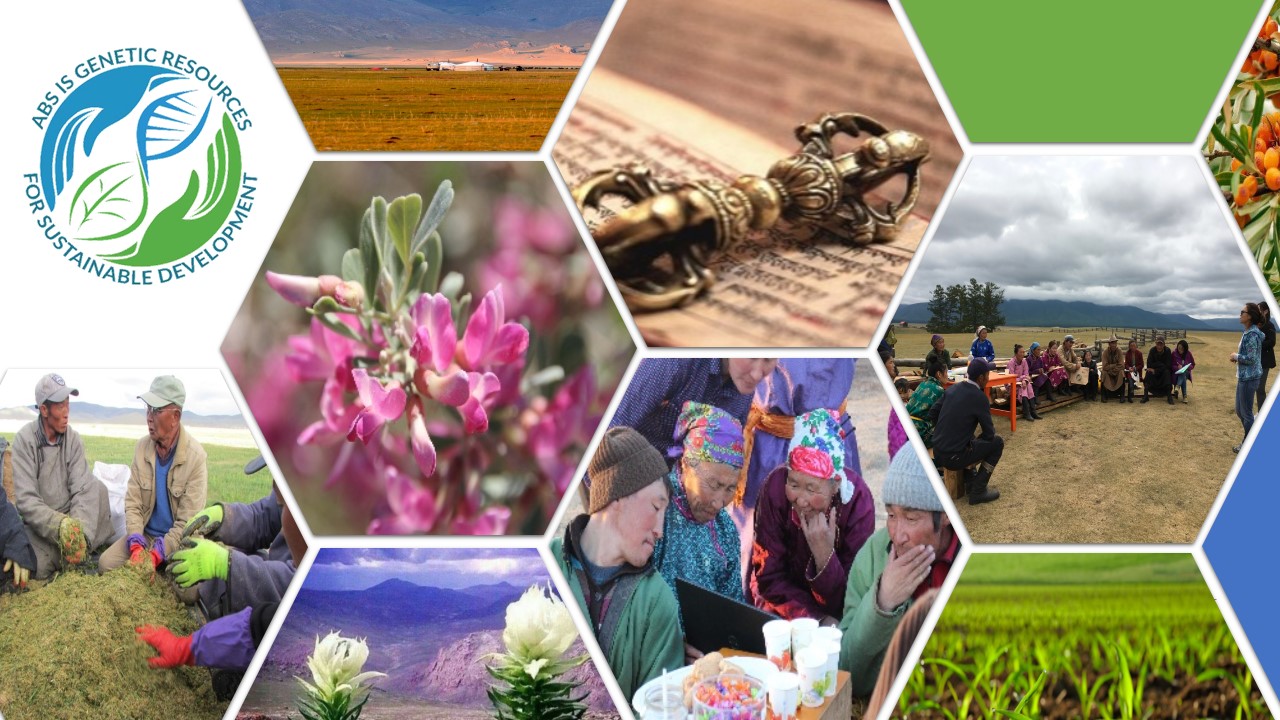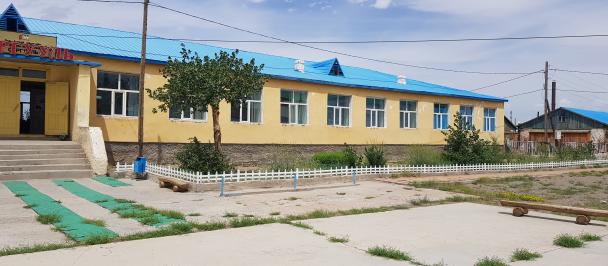By Ms Khishigjargal.Kh, Programme Analyst, UNDP Mongolia
The term used for implementing the Nagoya Protocol, “Access and Benefit sharing (ABS) from the utilization of genetic resources”, is relatively new. It really alters the current way of using Mongolia’s genetic materials more ethically and sustainably while respecting and valuing our inherited traditional knowledge.
The ABS project team has learned and explored many opportunities of using this mechanism for the country’s development and biodiversity conservation work, especially during this pandemic.
With today’s pandemic crisis, people are well informed about the COVID-19 virus and its variants, which holds genetic materials. Such viruses can be spread in the future if we continue to neglect nature, destroy the land, and damage biodiversity. This pandemic reminds us that we entered an entirely new geological epoch, the Anthropocene era of Humans, where humanity itself causes a risk to its own existence. Even though the start date of the Anthropocene is still under discussion, almost a quarter of species faces extinction due to the increased material consumption and CO2 emission.
So, how can we prevent future pandemics?
One of the Convention on Biological Diversity’s (CBD) objectives is to improve access and benefits sharing (ABS) from the utilization of genetic resources and their associated traditional knowledge. The Nagoya Protocol is the supplementary Protocol to the CBD to regulate fair, equitable access and benefit-sharing resulting from the utilization of genetic resources and associated traditional knowledge.
Mongolia has developed its national legislation on genetic resources to support the UNDP/ GEF Global project “Strengthening legal, institutional, and human resources to implement the Nagoya Protocol” and submitted it to the Parliament of Mongolia for approval. The legislation will establish legal certainty on access and benefit sharing from the utilization of genetic resources of animal, plant, and microorganisms and provide a mechanism for utilization of the genetic resources and registering associated traditional knowledge.
National regulations will be approved afterwards to register the utilization (research and development) of genetic resources originating from Mongolia as well as associated traditional knowledge. Moreover, monitoring the utilization abroad after leaving Mongolia will bring benefits in monetary and non-monetary forms back to the provider country, especially to the State as owner of the resources as well as local communities who are protecting the resources thanks to their customary laws and local traditions. The benefits will be used to advance the conservation of genetic resources in both in-situ and ex-situ conditions, contributing to the relevant objectives of CBD and promoting biotechnological research and technology transfer.
The pandemic led us to think about whether developing countries are prepared for such an unprecedented virus spread. The Nagoya Protocol plays a critical role in the response of COVID-19 impact. Since relevant genetic information is necessary to develop a diagnosis, member countries can share virus samples and vaccines through the Global ABS Clearing House Mechanism. In addition, there can be benefits resulting from sharing of DSI (Digital sequencing information) and samples of the virus.
As the virus mutates over time, it is important to invest in local research capacity to respond to this type of crisis better and efficiently. Countries need to have laboratory capacity to conduct in-depth research to reveal potential risks of various mutants. Due to the absence of preceding experiences acquired and economic profits generated from biotechnological research work, the country has not invested in research and development associated with genetic resources. Thus, it is imperative to have a close linkage of research results with technology development and production to foster biotechnological research and development in the country. The policy environment and economic incentive for the acceleration of private business initiatives can leverage further development.
Even without this incentive, global treaties and multilateral protocols provide another opportunity for biotechnological development. Under the Nagoya Protocol, Mongolia has an opportunity to collaborate with developed countries, which are the users of these genetic resources and establish such laboratory capacity locally as an outcome of the non-monetary benefit-sharing agreement signed between user and provider of genetic resources.
In many cases, the use of genetic resources is well connected to traditional knowledge. Previous generations have well kept the tradition of using natural/biological resources for various purposes, including traditional medicine, agriculture, and food. For example, Mongolian traditional medicine has a history of 5000 years. The richness of traditional knowledge of Mongolia associated with genetic resources can be seen from a word which one of the masters in traditional medicine: “Our genetic resources have potential to feed us for many generations. It has a much longer fate than the underground mineral resources.” Since traditional knowledge is considered one of the forms of intangible cultural heritage, however, cross coordination and cooperation among Ministries are necessary.
Recognizing the importance mentioned above of having national legislation on the ABS associated with the utilization of genetic resources, the Government, scientific institutions, and the private sector must act together quickly and boldly to pave the road for successfully implementing the Nagoya Protocol. Furthermore, with the increased global demand for genetic resource use in agriculture, food, cosmetics, and pharmacy, a change is needed in investing in nature by increasing public and private funding for biodiscovery projects, ex-situ and in-situ conservation, and protection of ancient Mongolian traditional knowledge.
References:
1. The next frontier Human development and the Anthropocene http://hdr.undp.org/sites/default/files/hdr2020.pdf;
2. The Nagoya Protocol on Access to Genetic Resources and the Fair and Equitable Sharing of Benefits Arising from the utilization to the Convention on Biological Diversity https://www.cbd.int/abs/about/default.shtml/;
3. G.Choijamts, Medicinal doctor on traditional medicine, http://ekhsurvalj.mn/news/view/1683

 Locations
Locations
